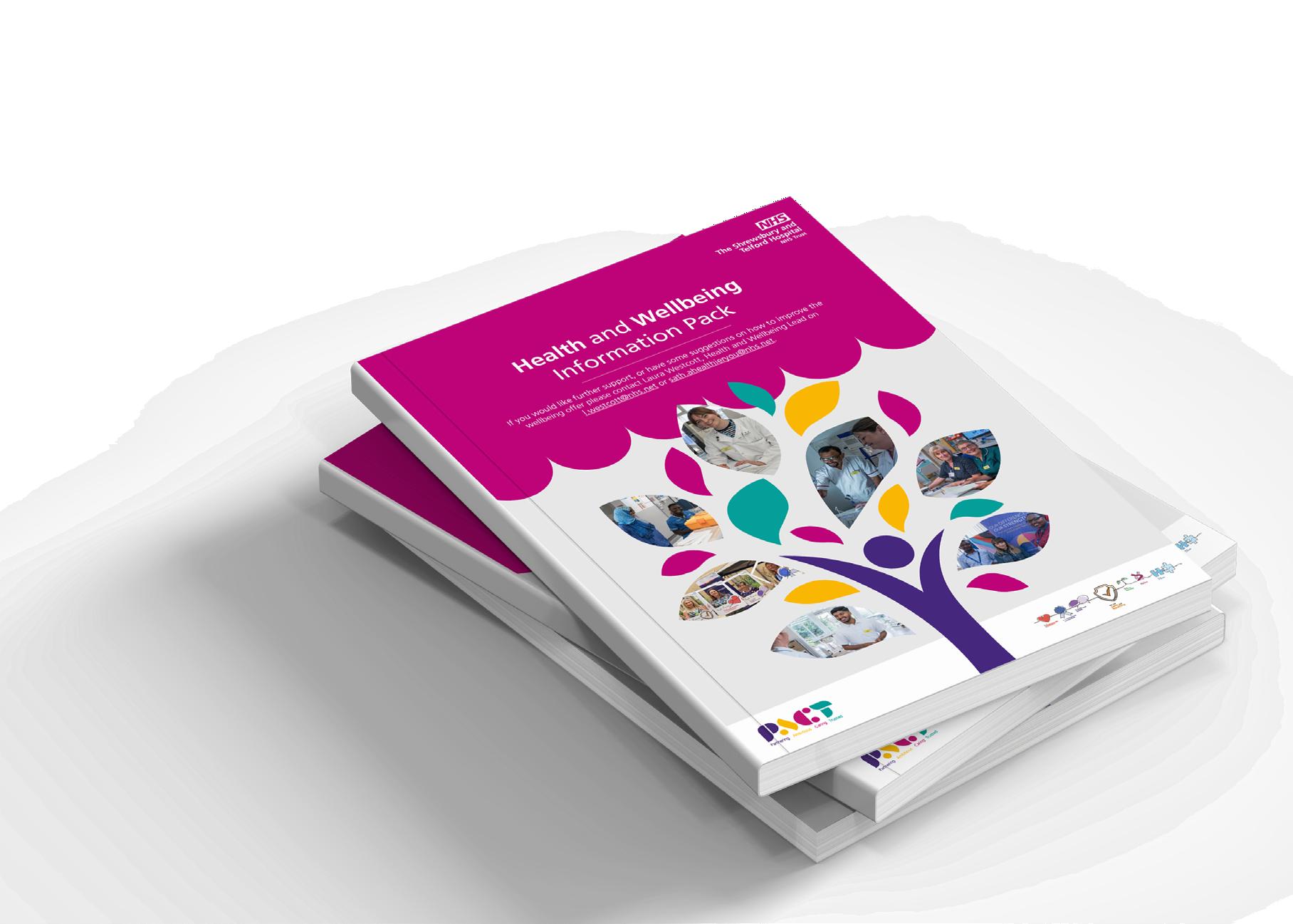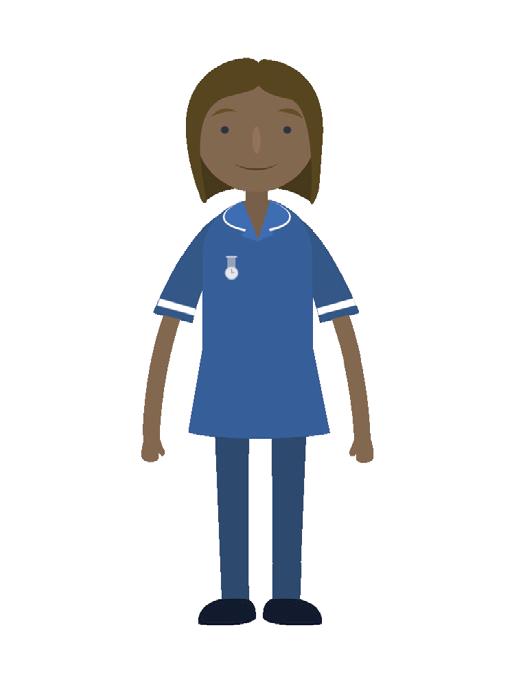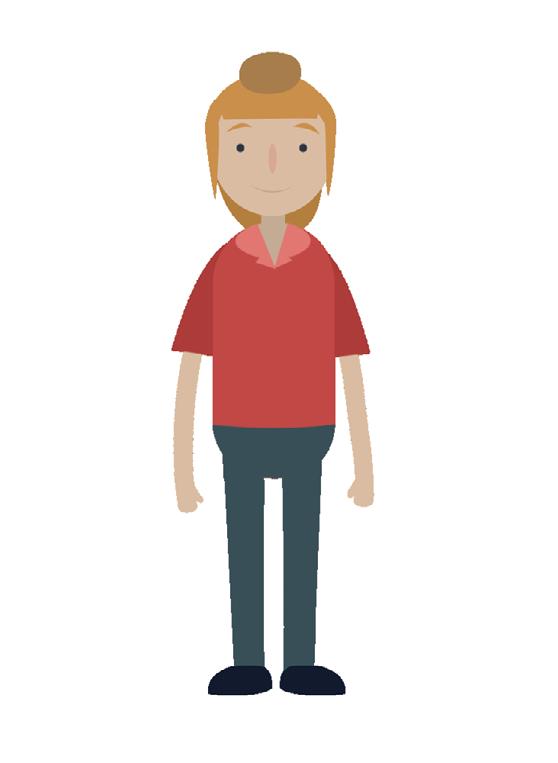Par tnering
Ambitious
Caring
Trusted

Par tnering
Ambitious
Caring
Trusted
An essential toolkit for managers using an Organisational Development (OD) mindset
The purpose of this toolkit is to bring together the essential knowledge, skills and techniques of organisational development to provide an understanding of what OD is and how to apply it across SaTH. To be effective, OD needs to be embedded into our culture for sustained transformation and learning. This toolkit provides ideas, tools and techniques to help managers and leaders to engage with their staff to create improvements and drive innovation.
The Francis Report into Mid Staffordshire NHS Foundation Trust (2013) and more recently the reviews such as the Ockenden Review into Maternity Services (2022) and the Messenger Review into Leadership and Management in the NHS (2021) highlight the importance of culture, values, leadership and development in delivering effective patient care.
The NHS People Promise underpins everything we do - This is a promise we must all make to each other – to work together to improve the experience of working in the NHS for everyone. Watch this short video which explains the People Promise in more detail: Our NHS People Promise - PLAY-CIRCLE


This approach is based on understanding behaviours, what causes certain behaviours, what motivates people and how to influence or change behaviour. The basic assumptions are:
• Organisations are socio-technical systems, in that to sustain and create strong performance senior leaders need to try and align people with technological systems.
• Work and interpersonal behaviour of staff is influenced by many factors.
• Employees are motivated not only by physiological needs but also by social and psychological needs.
• Different people have different perceptions, attitudes, needs and values.
• Conflict at work is unavoidable.
• Personal goals and Organisational goals must be joined together.
“ the application of behavioural science to organisational and system issues to align strategy and capability. It enhances the effectiveness of systems through interventions that enhance people’s collective capability to achieve shared goals.”
‘Do OD’ (NHS)
Aspiring Leaders
Internal Development
Foundations of Supervision & Team Leadership
External Development
Edward Jenner - National Leadership Academy
NHS Graduate Management Training Scheme (GMTS)


Supervisor / Team Leader
Level 1
Internal Development
SaTH 1 Leadership Programme
Foundations of Supervision & Team Leadership
External Development
Edward Jenner – National Leadership Academy
Apprenticeships
Level 3 Team Leader / Supervisor

First Line Manager
Level 2
Internal Development
SaTH 2 Leadership Programme
Foundations of Supervision & Team Leadership
The Root Leadership Programme
External Development
Stepping Up - National Leadership Academy
Mary Seacole - National Leadership Academy
Graduate Management Training Scheme
Developing Aspirant BAME Nursing and Midwifery Leaders’ Programme
Apprenticeships
Level 3 Team Leader / Supervisor
Level 5 Operations / Department Manager
Middle Manager
Level 3
Internal Development
SaTH 3 Leadership Programme
The Root Leadership Programme (Band 7 Nurse Leadership)
External Development
Stepping Up - National Leadership Academy
Mary Seacole - National Leadership Academy
Elizabeth Garrett Anderson - National Leadership Academy
Rosalind Franklin - National Leadership Academy Graduate Management Training Scheme
Developing aspirant BAME Nursing and Midwifery Leaders Programme
Apprenticeships
Level 5 Operations / Department Manager
Level 6 Chartered Manager
Senior Manager
Level 4
Internal Development
SaTH 4 Senior Leadership Programme
Medical Leadership
Senior Leadership & Coaching Programme
External Development
Ready Now - National Leadership Academy
Nye Bevan - National Leadership Academy
Apprenticeships
Level 6 Chartered Manager
Level 7 Senior Leader
Executive Level 5
Internal Development
Board Development Programme
Medical Leadership Programme
External Development
Aspiring Programme
Development All Levels
Internal Development
Affina Team Coaching Journey
SaTH Improvement Training
Inclusion Training
Mental health first aid training
People and HR related training
Talent/appraisal and career conversation training
Coaching Skills for Leaders
Emotional Intelligence
Ignition - New Managers Induction
Introduction to Finance for New Budget Holders
Resilience Awareness
Values Based Conversations
Values, Behaviours and Attitude Interviewing
Safer Recruitment Workshop
Leadership Masterclasses

Personal Development
Coaching for personal development
Healthcare Leadership model 360 feedback
DiSC & SDI
Fundamentals of SaTH Improvement
SaTH Improvement Practitioner
SaTH BME Leadership Programme
Working effectively together with patients, families, colleagues, the local health and care system, universities and other stakeholders and through our improvement alliance
We work collaboratively to achieve team goals and priorities
We help each other with a ‘can do’ attitude that supports team morale and motivation
We actively listen to make sure we understand and where possible, we make the right decisions based on what we learn from others
We don’t work in silo’s.
We don’t undermine other people or teams.
We don’t ignore people when they need support.
Setting and achieving high standards for ourselves personally and for the care we deliver, both today and in the future. Embracing innovation to continuously improve the quality and sustainability of our services
We are innovative and communicate about our barriers to change and we work together as a team to make improvements
We ensure everyone feels safe to speak up and put forward their ideas, so we can all share our views, learn from others so we can do things differently
We set high standards and we celebrate and recognise each other's and the team’s successes together
We don’t avoid tackling issues that impact patients, families and colleagues
We don’t dismiss ideas; When ideas for improvement are put forward, we seek support, make a plan and take action to try new things
We don't tolerate poor standards, andwe recognise that we are allresponsible for upholding high standards at our Trust
Showing compassion, respect and empathy for our patients, families and each other, caring about the difference we make for our community
We treat all people with civility and respect, valuing each other to enhance team morale, so it has a positive impact on patient care
We are inclusive; ensuring everyone feels part of the team with shared goals to achieve together
We are kind to each other, our patients and community as we'd like our loved ones to be treated
We don’t tolerate bullying or harassment
We don’t tolerate people being disrespectful or rude
We don’t turn a blind eye to poor behaviour
Open, transparent and reliable, continuously learning, doing our best to consistently deliver excellent care for our communities
We treat each other fairly, recognising the importance of every role within our Trust
We are open and honest, and encourage people to speak up whilst respecting confidentiality, continuously learning
We take responsibility and are accountable for our actions and decisions
We don’t blame others
We don’t over promise and under deliver
We don’t keep making the same mistakes
The Trust values and behaviour framework underpins everything we do at SaTH.
Our leaders and managers are expected to role model the positive behaviours, and to live the values in their everyday work.
• Continuation
• What’s presenting?
• Who is experiencing it?
• Closure Entry
• Seeking help
• Forming ideas
• Review goals
• Share findings
• Exploring roles
• Defining success
and analysis
• What’s happening now?
• What is being said?
• OD interventions
• Working with the system
• Adjusting the plan
• Re-contracting
• Prioritising
• Giving • Receiving
• Questioning
• Observation
Data Analysis
• Identifying themes
• Summarising
• Theory & models Data
The OD, Leadership and Culture Commissioning Form should be completed prior to any project or intervention taking place.
As OD Practitioners, the OD team will use a consultancy approach, adopting the process shown above to work with teams and individuals. This will usually include applying the underpinning theories and models, using diagnostic tools and models to understand where problems lie, and designing and implementing interventions to bring about the desired change.
The OD, Leadership and Culture Commissioning Form - �� should be completed prior to any project or intervention taking place.
The five fundamentals of OD at SaTH
Making SaTH a great place to work
Reward and Recognition
Celebrating our achievements
Looking after our people
Developing our leaders
Culture and EDI
Building a compassionate and inclusive culture
Tuckman's 5 Stages of Teams Development Model & How to use it | by Emma-Louise | The Launchpad
- The Coaching Tools Company Blog - ��
This theory explores the five stages that all teams go through – from formation to disbanding (forming, storming, norming, performing, adjourning). It is particularly useful for managers to understand the needs of their team at each stage and adapt their way of working accordingly. By recognising all the stages, managers can help their team become effective quickly.
The video below explains in more detail:
Tuckman’s Team Building Model | How to build a Team? - PLAY-CIRCLE
Patrick Lencioni first published his book ‘The Five Dysfunctions of a Team’ in 2002. The model describes the five behaviours that lead to a high performing team. In his book, Lencioni describes through the telling of a story, how the absence of the five behaviours (or the ‘dysfunctions’) can lead to ineffective teams. Lencioni explains that all of the behaviours relate to each other, for example an absence of trust sets the tone for a fear of conflict, and so on.
This introductory video explains in more detail:
The Five Dysfunctions of a Team - PLAY-CIRCLE
By using an online questionnaire, teams can evaluate their susceptibility to the five dysfunctions and identify where improvements are needed for greater team performance.

Contact the Organisational Development Team –sath.organisationaldevelopmentteam@nhs.net - ENVELOPE-SQUARE
Patrick Lencioni
Line managers can make a real difference in the culture they create for their teams.
Different leadership styles are available, and the key is using the right ones at the right time to make the biggest difference.
Commanding/
Description
Also refers to "dictatorship" Demands immediate compliance Mobilises people toward a vision
Focuses on emotional needs over work needs. Creates harmony and builds emotional bonds
Uses participation, listening to both the bad and the good news
Builds challenging and exciting goals for people. Setting high standards for performance
Connecting corporate goals while helping people find strengths and weaknesses, linking these to career aspirations and actions
Style in a phrase "Do what I tell you" "Come with me" "People come first" "What do you think?" "Do as I do, now" "Try this"
Underlying emotional intelligence competencies
When to use
Drive to achieve, initiative, self-control
Self-confidence, empathy, change catalyst
Empathy, building relationships, communication
Collaboration, team leadership, communication
Conscientiousness, drive to achieve, initiative
Developing others, empathy, selfawareness
Weaknesses
In a crisis or urgency, to kick-start a turnaround, or with problem employees
Members can feel stifled as they are treated as workers and not asked for an opinion
When changes require a new vision, or when a clear direction is needed
To heal rifts in a team or to motivate people during stressful situations
Lacks the ability to help team members understand how they get to a vision or goal
Confrontation and emotionally distressing positions can be avoided
To build buy-in or consensus, or to get input from valuable employees
To get quick results from a highly motivated and competent team
Can be lots of listening but very little effective action
Coach, mentor and develop individuals when they need to build long-term strengths
Can lack emotional intelligence
Can come across as micromanaging
No one style should ever be used alone – the key is having a repertoire of styles. It’s possible to increase your repertoire of leadership styles through practice.
This introductory video explains in more detail:

Daniel Goleman's 6 Leadership Styles for Team Leaders - PLAY-CIRCLE

See also Situational Leadership Model: Situational Leadership Model Explained - PLAY-CIRCLE
The conference welcomes leaders and aspiring leaders from across our Trust who are working in Leadership or Management positions as well as aspiring leaders. Key-note speakers provide the stimulation and context to the conference, exploring the latest topics and research to stimulate reflections and learning.
The Conference provides an informal space for leaders to share, learn and explore solutions together with like-minded people, and those with different perspectives.
The event provides the opportunity to use space and time away from the workplace to consider leadership styles, developing a collective compassionate and inclusive leadership style.
Further information on the Leadership Conference can be found on the Trust intranet - ��

Further information sources
SaTH Talent Portal – Managers and Leaders – Evolving as a leader:
SaTH Talent Portal - ��
Affina Team Journey - AOD - evidence-based tool – an online team development tool with a clear, ten-stage layout to enable teams to work through the practical and interactive materials.
Affina Team Journey - AOD - evidence-based tool - ��
Strengths Deployment Inventory (SDI) – can be used to identify how individuals in a team behave when things are going well and when faced with opposition or conflict.
Everything DiSC – A simple tool that measures an individual’s workplace preferences and priorities based around four primary behaviours of Dominance, Influence, Steadiness and Conscientiousness. Learning about other people’s DiSC styles can help you understand their priorities and how they may differ from your own. A great team development tool.
SaTH Leadership Programmes / STEP / Galvanise
SaTH Intranet - Leadership Development Programmes - ��
SaTH Intranet - Coaching and Mentoring - ��
SaTH Intranet - Leadership Masterclasses- ��

See also
• The NHS Leadership Academy for details of national programmes Leadership Academy - Better Leaders, Better Care, Brighter Future - ��
Some useful videos to watch:
• The importance of teaming in health and care: Amy Edmondson - PLAY-CIRCLE
• The importance of psychological safety: Amy Edmondson - PLAY-CIRCLE
Culture Iceberg – Edgar Schein
Edgar Schein's 3 Levels of Organizational Culture - PLAY-CIRCLE
Culture can be described as ‘the way we do things around here’. Schein’s cultural iceberg suggests there are three levels of organisation culture:
Artifacts
Schein’s 3 layers of organisational culture
Artifacts
visible cultural elements
Beliefs, Values and Attitudes strategies, goals, norms and values
1
2
Basic Underlying Assumptions
unconscious, taken for granted beliefs and perceptions
3
Aspects of the culture that are visible and are on the surface, such as types of uniform, policies and processes, or the physical environment, such as private offices or open plan layouts.
Beliefs, Values and Attitudes
The values of the organisation, expected standards of behaviour, strategic documents, mission statements.
Basic underlying Assumptions
Unconscious, deeply-held beliefs, attitudes and behaviours.
According to Schein, culture is the most difficult part of an organisation to change. Most change tends to focus on changes to processes with some transformation aimed at changing the Artifact level, rather than change that is longer lasting and impacts on staff behaviour and beliefs.
The Culture Dashboard was established to present key data from the staff survey into six themes for the Trust to focus its cultural transformation programme. Each theme has been standardised to include four questions from the Staff Survey. The Dashboard continues to be a key metric for the cultural transformation within the Trust. The six key themes have enabled there to be a focused approach to support and cultural interventions to drive the increase in scores.
Burke Litwin Model of Organisational Change –First Order/Second Order Change
The Burke-Litwin Model: A Conversation with Warner Burke - PLAY-CIRCLE
This model suggests that OD interventions that are directed towards structure, management practices, policies and procedures result in first order change, or transactional change.
OD interventions that significantly change the organisation’s mission, strategy or how leaders lead results in second order change, or transformational change. It is about changing the culture in order to bring about changes in individuals and organisational performance.
Structure
Task
Leadership
Management
Organisational
Systems (Policies & Procedures)
'Warner shares the history behind how his famous “Burke-Litwin” model was created, offers suggestions on how to use the model, and walks us through the theory, stepby-step, explaining how each item is connected'
‘The
Burke-Litwin Model’
John M Fisher's Process of Transition - PLAY-CIRCLE
John Fisher adapted the ‘change curve’ originally developed by Elizabeth Kubler Ross, based on his experiences of working with organisations and observing their responses to change.
The model can be viewed through the lens of organisational change as well as personal change.
© J M Fisher 1999/2012. Free for personal and organizational development use. Not to be sold or copied for general publication. A free resource from www.businessballs.com with permission of John M Fisher. See the theory and explanation at https://www.businessballs.com/change-management/ personal-change-stages-john-fisher
Denial
T his is big ger han I thou g ht !
mpact have ? t af fe ct ? W ho am I ?
At self
Did I re ally do that ?
Change ? W hat Change ?
Disillusionment
I ’ m of f ! ! ....this isn’t for me !
I c an se e mysel f in the fu ture
Threat Guilt Depression
Hostility
Gradual Acceptance
Moving Forward
T his c an work and be good I ’ ll mak e this work i f i t k ills me ! !
Complacency
The McKinsey 7S Model is a diagnostic tool which helps to understand and identify the gaps and inconsistences to develop a holistic, whole systems solution. It proposes that an organisation consists of 7 interdependent factors which are divided into two groups:
Hard Elements:
• Strategy: the plan devised to deliver the organisation/team goals.
• Structure: the way the organisation/team is structured and who to reports to whom.
• Systems: the daily activities and procedures that staff members engage in to get the job done.
Soft Elements:
• Shared Values: organisation/team values
• Skills: Skills and capability of the staff to deliver the strategy
• Style: the style of leadership adopted
• Staff: availability, capacity and overall morale.
The Organisational Development Team will use this model when undertaking a cultural review within a team/department to identify areas for improvement/action plans.
Further information sources
Lewin Three Stages of Change - Unfreeze, Change, Freeze
Lewin, Stage Model of Change Unfreezing Changing
Refreezing Animated Part 5 - PLAY-CIRCLE
Kurt Lewin developed his model for understanding change in the 1940. His model is known as Unfreeze – Change –Refreeze, which refers to the three-stage process of change that he describes.
The first stage of change involves preparing the organization to accept that change is necessary, which involves breaking down the existing status quo before you can build up a new way of operating - Unfreeze.
After the uncertainty created in the unfreeze stage, the change stage is where people begin to resolve their uncertainty and look for new ways to do things - Change.
When the changes are taking shape and people have embraced the new ways of working, the organization is ready to refreeze - Refreeze
For more information on any of the above, contact the Organisational Development Team.
See also
• STEPS – Simple, Thinking, Emotions, Practical, Stories (Damian Hughes) The Five STEPS to a Winning Mindset book launch - PLAY-CIRCLE
• Kotter’s Eight Step Change Model Kotter's 8-Step Change Model Explained - PLAY-CIRCLE
Civility, Respect, Inclusion and Kindness - a social movement that is gathering steam at SaTH. We want SaTH to be a safe place to work, one that is compassionate, kind and caring, where we stand proud and dignified.
Email Lisa Baker-Murray (Head of Culture) for more information on l.baker-murray@nhs.net - ENVELOPE-SQUARE
Equity vs. Equality
Evidence shows that fair treatment of staff is linked to a better experience of care for patients. Moreover, the NHS is in the midst of a workforce crisis and improving its performance on diversity and inclusion will play an important role in the NHS becoming a better place to work and build a career.
Watch this short video on fostering inclusion:

Building an Equitable and Inclusive Workplace - PLAY-CIRCLE
See also the links to our Staff Networks:
SaTH Intranet - Staff Equality Networks - ��
SaTH Intranet – Pride - ��
A selection of blogs, podcasts, articles and other resources from the Kings Fund: Equality and diversity in the NHS, health and care | The King's Fund - ��
"Real diversity and inclusion doesn't mean that we will always agree. It means that even when we disagree, we can still respect each other."
‘Justin Jones - Fosu’
Supporting our colleagues
The NHS achieves extraordinary things for patients, but this is only possible if the safety, health and wellbeing of our people is recognised as a key priority. If we don’t look after ourselves and our colleagues, we cannot deliver safe, high quality patient care.
Below is a selection of resources to inspire and guide you in supporting your teams:
SaTH Health and Wellbeing Brochure - ��
Basic Needs at Work: It’s time to give staff what they need – Sonia Sparkles - ��
NHS England | Supporting our NHS people - ��
What is a wellbeing conversation? - PLAY-CIRCLE
Empathy - �� Click Here to download the Health and Wellbeing brochure

We are recognised and rewarded (The NHS People Promise).
A simple thank you for our day-to-day work, formal recognition for our dedication and fair salary for our contribution.
These ‘Moments that Matter’ - �� digital postcards are a great way to recognise key moments, such as joining a team or celebrating a birthday, which are aligned to the People Promise.
SaTH has an extensive calendar of reward and recognition events, including Long Service Awards, the Annual Recognition Week and Trust Celebratory Awards as well events to recognise the diverse roles in the NHS.

Many teams could have up to 5 different generations working alongside each other, and managers will need to understand the different societal, environmental and technological influences that shape their values and expectations.
The articles below explain the differences in generations and their expectations of the workplace in terms of reward and recognition:
Generational differences explained (with management tips) - ��
Generational Expectations in Today’s Workforce - ��
Why is employee experience so important?
" The more positive the experiences of staff within an NHS trust, the better the outcomes for that Trust. The more engaged staff members are, the better the outcomes for patients and the organisation generally.”
West and Dawson, 2012 'Employee Engagement and NHS Performance' - ��
Research by Dawson in 2009 and 2018 concluded there are "strong associations" between staff experience and how satisfied patients are.
Michael West - NHS Staff Survey - PLAY-CIRCLE
See also:
The Movement - Engage for Success - ��
















NHS Staff Survey and National Quarterly People Pulse Survey
Employee engagement is made up of three sub-components, these are measured via nine questions in the NHS Staff Survey (NSS) and National Quarterly Pulse Survey (NQPS).
• I often/always look forward to going to work
• I am often/always enthusiastic about my job
• Time often/always passes quickly when I am working


• There are frequent opportunities for me to show initiative in my role
• I am able to make suggestions to improve the work of my team or department


• I am able to make improvements happen in my area of work
• Care of patients/service users is my organisation’s top priority
• I would recommend my organisation as a place to work
• If a friend or relative needed treatment I would be happy with the standard of care provided by this organisation.
NHS Staff Survey and National Quarterly People Pulse Survey
The People Pulse is a national online pulse survey, developed for all provider and commissioner organisations, to support local listening and engagement activities. Results provide a regular national, regional and local view of employee experience and wellbeing.
The survey continues to allow us to explore various aspects of experience and sentiment of our NHS people.
It takes only five minutes to complete and asks employees how supported, informed, motivated or anxious they may feel, and what support would make the biggest difference to their experience at work. Results from the People Pulse inform local and national actions to improve the experiences of our people and patients.
The People Pulse results will complement the Staff Survey results and feed into the divisional action plans and interventions.
Use this link to view the most recent and previous results: SaTH Intranet - People Pulse - ��
A space for your thoughts, ideas, and aspirations
If you have any questions about any of the information included in this document, or if you require the information providing in an alternative format or a different language, please contact the Organisational Development Team: sath.organisationaldevelopmentteam@nhs.net - ENVELOPE-SQUARE